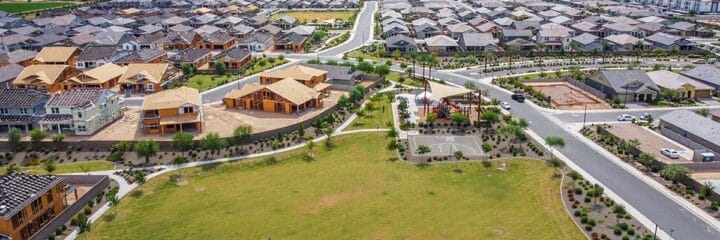
Cut and Fill Analysis: The Key to Efficient Construction and Land Development
Every decision in construction and land development has far-reaching implications on time, cost, and environmental sustainability. A critical aspect of successful project execution is cut and fill analysis—a precise evaluation of earthwork required to shape the land according to design specifications. Whether you’re developing residential neighborhoods, highways, or large-scale energy projects, mastering this process is fundamental to achieving balance between operational efficiency, cost control, and ecological responsibility.
What is Cut and Fill Analysis?
Cut and fill analysis involves assessing the topography of a site to calculate the volume of soil that needs to be excavated (cut) and the amount that must be placed (fill) to achieve a specified grade. It’s an essential step for ensuring that a site is level or prepared according to project requirements, whether that’s for building foundations, infrastructure, or landscaping.
By analyzing topographical data and balancing these volumes, engineers can limit the movement of soil, which is often one of the costliest aspects of site preparation.
The Importance of Cut and Fill Analysis in Modern Construction
Improved Accuracy with Advanced Technology
The era of manual land surveying with basic tools has become a thing of the past. Today, advancements like Geographic Information Systems (GIS), Building Information Modeling (BIM), and drone-based surveys enable professionals to perform cut-and-fill analysis with pinpoint accuracy. These tools integrate topographical data into 3D models, allowing engineers to visualize terrain changes and identify optimal strategies for balancing earthwork.
Drone surveys, in particular, have revolutionized site analysis. They provide high-resolution maps and volumetric measurements in a fraction of the time required by traditional methods, enabling quicker decision-making and better resource allocation.
Streamlined Construction Planning
A precise cut-and-fill analysis enables project managers to develop efficient grading and excavation plans. Identifying where materials can be reused minimizes transporting excess soil offsite or bringing in additional fill material, saving time and reducing logistical complexity.
For example, if a project site requires 5,000 cubic meters of soil to be removed from one area and 4,800 cubic meters to be added elsewhere, a balanced design would ensure the cut material is reused as fill, reducing the reliance on external hauling.

Key Benefits of Accurate Cut and Fill Analysis
Cost Control
Excavation and earthmoving are some of the most expensive operations in construction. Transportation of excess soil or reliance on imported materials can cause costs to spiral. Accurate analysis minimizes these inefficiencies, ensuring that projects stay on budget.
Additionally, advanced planning avoids delays caused by unforeseen volume discrepancies, eliminating last-minute material sourcing or adjustments.
Environmental Responsibility
Environmental regulations often mandate that developers minimize ecological disruption during construction. A well-executed cut-and-fill plan reduces land disturbance and prevents soil erosion and sediment runoff, which can harm nearby water bodies. Moreover, balancing earthwork limits the need for hauling, thereby lowering the carbon emissions associated with transport.
Sustainability in Resource Use
Reusing soil onsite aligns with sustainable construction practices, minimizing waste and conserving resources. Many forward-thinking projects now prioritize designs that incorporate balanced cut-fill strategies from the outset, significantly reducing environmental impact.
Enhanced Design Flexibility
By incorporating cut-and-fill analysis early in the project lifecycle, designers have greater flexibility to adjust grading and optimize terrain usage. This is particularly important in projects involving challenging landscapes, such as sloped terrains, flood-prone areas, or sites with significant elevation differences.

Real-World Applications of Cut and Fill Analysis
Residential and Commercial Developments
In urban planning, cut and fill analysis ensures that the grading of land accommodates safe and stable foundations for homes, office buildings, and retail complexes. This process also facilitates effective drainage systems, preventing long-term structural issues caused by water retention.
Infrastructure Projects
Large-scale transportation projects such as highways, railways, and airports rely heavily on accurate earthworks. Balancing cut and fill minimizes the material required for embankments or reduces excavation in tunnel construction, significantly lowering costs and timelines.
Energy Infrastructure
Renewable energy projects, such as wind farms and solar fields, require expansive land grading for installation. Precise cut and fill planning ensures efficient land use and reduces environmental disruption—key considerations for projects often scrutinized for their ecological impact.
Agriculture and Landscaping
Cut and fill is equally vital for agricultural projects like terracing or irrigation system preparation. By shaping the land to direct water flow, developers can optimize irrigation while preventing soil erosion. In landscaping, cut and fill transforms natural terrains into recreational parks, golf courses, or functional public spaces.

How Technology is Transforming Cut and Fill Analysis
Technological advancements are making cut and fill analysis faster, more accurate, and more environmentally friendly. Among these technologies are:
- Drone Surveys: Drones capture highly detailed aerial imagery and generate 3D models of project sites. These models allow engineers to assess existing terrain quickly and make informed decisions.
- GIS and BIM Integration: Geographic Information Systems enable precise mapping, while Building Information Modeling software integrates cut-and-fill analysis with overall construction plans, ensuring seamless coordination across teams.
- Automation and Machine Learning: Modern software uses machine learning algorithms to optimize cut and fill strategies, analyzing thousands of potential configurations to find the most cost-effective and sustainable solution.
- Real-Time Monitoring: With tools that provide real-time feedback, contractors can track progress and ensure adherence to cut and fill plans during construction, avoiding costly rework.

Environmental Considerations
Cut and fill analysis is increasingly being used to prioritize sustainability. By working with the natural topography of the land and adhering to stringent regulations, developers can preserve native ecosystems, reduce greenhouse gas emissions, and

Cut and fill analysis is a cornerstone of efficient, cost-effective, and environmentally conscious construction. From planning and design to execution and monitoring, this process ensures that earthwork is carried out with minimal waste and maximum sustainability. As technology advances, the precision and efficiency of cut and fill analysis will continue to shape the future of construction, enabling projects that are not only economically viable but also environmentally responsible.